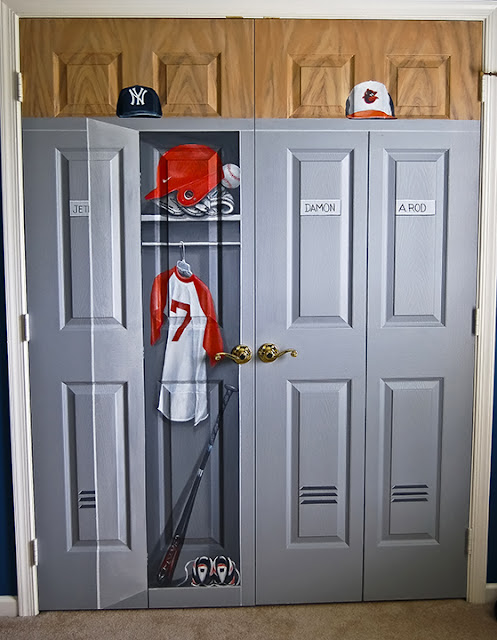I loved the excitement a child would show about the unique artwork that was created just for their room. That is why I always included the child in my design questions when planning a mural for a children's room. If you are painting a mural for your own child you can certainly do this in your early planning stages and bounce around some ideas together. When you are planning professional murals it may depend on the client situation during your first meeting. Some people have a very difficult time visualizing anything and getting the child involved at this point confuses the parent even more. You have to feel out the situation, but when possible ask the child's opinion.
I always treated the portfolio of my faux and mural artwork photos like gold! Only the inner sanctum of the designer I worked with ever got to keep that baby overnight!
To get good reference materials and ideas: The children's library is a fantastic place to find large picture books for inspiration. The newsstand section of a store like Barnes and Noble carries many interior design magazines that feature children's rooms and murals. Any kind of art or design trade publication can be an inspiration. If you are going to do this as a career you must invest in all kinds of reference books on many kinds of subjects. Collect animal, architecture, nature, sports, and fairytale books. Get picture books like "The DK Children's Illustrated Dictionaries." Purchase books specific to showing mural examples which usually have how-to information in them as well. It is always best to have the theme around something the child has a passion about because they will live with this artwork for many years.
When I began painting the walls in a child's room I found the children were usually curious, liked to watch for awhile and ask many questions. That is a perfect time to find out what you can add into the mural to make it extra personal, and make them feel like they had input into the design. This could be as simple as the addition of their favorite bug, animal, their pet, putting their name on a banner or a locker door. Every situation is different.
If this is your first time painting on a wall pick a smaller sized mural and a simple design. Use small cans of water based house paint. Benjamin Moore is my favorite brand because it is so thick and creamy. They also have a glazing liquid to make your paint transparent when needed. Some people only use the small plastic squirt bottles of craft paint when doing a smaller mural. You can squirt the paint into small containers like those plastic cups you get to put ketchup in at fast food restaurants. Remember most importantly it is all just paint, so do not be afraid of it! If you do not like what you painted the first time. Lightly sand any thick edges you made, paint over it with your wall paint, and just start again.
Be sure to have a nice supply of good brushes and a bucket of water to start. Keep rags and paper towels handy for any drips. Buy a few sizes of real artist acrylic "filbert" style brushes from the art store, along with any detail brushes you may need. I used a plastic tool box with the handle in the middle to carry my brush collection. On one side was the brushes and the other side was various tools such as knives, scissors,tapes, rulers, measuring tape, laser levels, pencils, kneaded erasers, paint can opener, chalk, etc. You can tape any reference photos or tear sheets right up on the wall with painters tape, and move them around as you go. Have all the reference pages in books already tabbed and notated so you can find your place easily.
To see more examples of my past children's mural work in homes, commercial settings and volunteer work, go to my Gallery Portfolio at Crystal Visions Art.











Crystal--your work always amazes me. It's stunning!!
ReplyDeleteDid you paint a mural on Aowyn's bedroom wall?
Thank you Tamera. The most frustrating thing for me has always been that both myself and my daughter rent, and cannot paint directly on walls. One could always do it on canvas. I do have a number of 10 foot squares leftover from an old TV job. Perhaps one day I will make something for her walls!
ReplyDeleteNicely presented ...
ReplyDeleteSimple yet very helpful tips. Thank you for sharing I learned so many stuff here especially I'm just a beginner in painting mural arts.
ReplyDeleteawesome...My first time to your blog and obtained a wealth of knowledge but I am 56 years old and it would take me 50 years to get just half that good......
ReplyDeleteI am your newest follower
I am so happy some people have gotten something from this post. I will have other posts with painting tips in the future. :-D
ReplyDelete